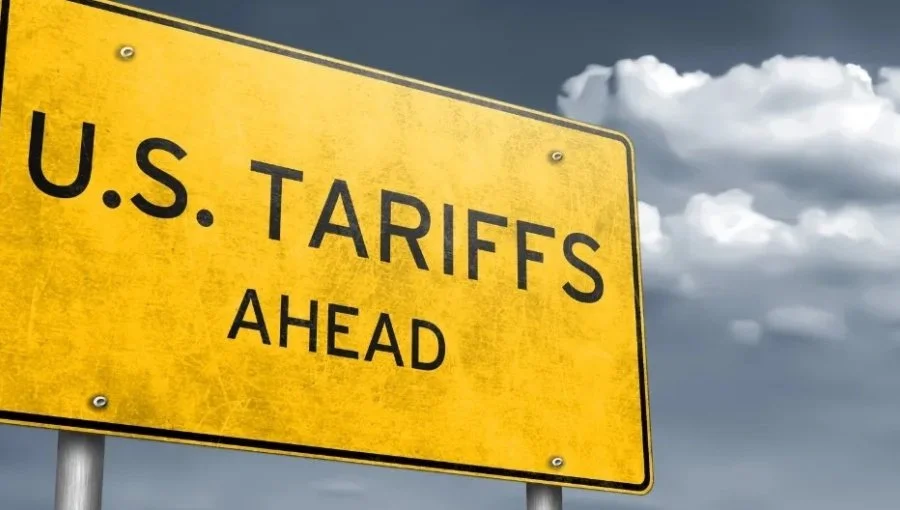Tariffs, Rates, and the Real Estate Road Ahead this Spring
Tariffs aren’t something we usually think about in real estate. Sure, there have been trade issues here and there that have sort of affected what goes into building a home (remember the 2002 steel tariffs?). But when you start talking about 25% tariffs on lumber and drywall—the stuff that makes up the bones of just about every new house—you’ve officially got the housing industry’s attention. And therefore, mine.
Let’s be clear: this isn’t about right or wrong, or what should or shouldn’t happen politically. That’s way above my pay grade—so I’ll leave that to the policy wonks and economists. But if something in the economy has the potential to shake up homebuilding and home sales in a meaningful way, it’s best to take a look.
So here’s what’s going on, and what it could mean for our market, while we all play the classic “wait and see” game.
What’s happening?
There’s a lot of talk around tariffs from multiple countries. At the time of writing this, we’re still waiting to see exactly what comes into effect—and when. But as of now, we’re looking at a 25%+ added tax on imports from our neighbors to the north and south (Canada and Mexico).
According to the National Association of Home Builders, 72% of the lumber used in U.S. construction comes from Canada, and 74% of the materials used to make drywall come from Mexico. These are essential components in nearly every home built in America—especially in the more affordable segments of the market.
And that’s the key point: we don’t have a shortage of luxury homes. The real gap is in the missing middle and entry-level price points—and that’s exactly where these kinds of tariffs hurt the most. When building costs rise, builders have to pass those costs along—but only if the market allows it.
Which leads us to the real problem...
Affordability bottlenecks
Buyers in the entry and mid-price ranges are working within strict loan limits and tight budgets. They often use low down payment loans and rely heavily on appraisals matching up with comps, which puts real constraints on pricing.
So even if builders want to pass on higher costs, they often can’t. The loan won’t work. The deal won’t close. Le sigh.
But on the higher end? A totally different story. Builders can bake an extra 10% into a $3 million home with far less resistance. Those buyers tend to have more flexibility—and often, more cash.
So, in essence, we’re disincentivizing builders from constructing homes at the lower price points where they’re most needed. And if tariffs like these go into effect—or even just hover in the headlines—it creates enough uncertainty to slow down that type of building even more. Which pushes the dream of creating affordable housing further out of reach.
A Generation Later, Buying Power Has Been Cut in Half
Did you know the average age of a first-time homebuyer today is 38? Back in 1991, it was 28. That’s a ten-year delay in just one generation.
And here’s a stat that really paints the picture:
In 1981, the average home cost $68,900—or about $237,000 in today’s dollars. The average household income (adjusted) was around $80K.
Today, the median home price is $420,000, and the median household income is $65K. That’s a home-to-income ratio of over 6x—more than double what it used to be.
Buyers are already stretched thin by high home prices and elevated mortgage rates. So even a relatively modest increase in costs—whether from tariffs, labor, or interest rate hikes—could keep many would-be buyers on the sidelines.
So what does it all amount to?
The U.S. is short nearly 4 million homes—and the only real way out of that is to build. But if costs rise (whether from tariffs or anything else), it gets even harder to build at the price points where we already see the biggest shortages.
And like anything complicated, there are nuances and exceptions. But at first glance, these tariffs are almost certain to make the missing middle even harder to come by. Which isn’t great news for the market—especially heading into the spring season.
Now, to be fair, tariffs alone won't likely tank the housing market. But they could be one more headwind in an already fragile situation. And when affordability breaks down at the bottom, it ripples all the way up the chain. Like dominoes—each one impacting the next.
If I had to make a prediction? I’d say inventory will tighten, buyers in the low-to-middle range will grow more cautious, and—like any market that runs on clarity—this added layer of uncertainty will create drag across multiple sectors of the housing market.
Have questions heading into the Spring market? Let’s connect.

